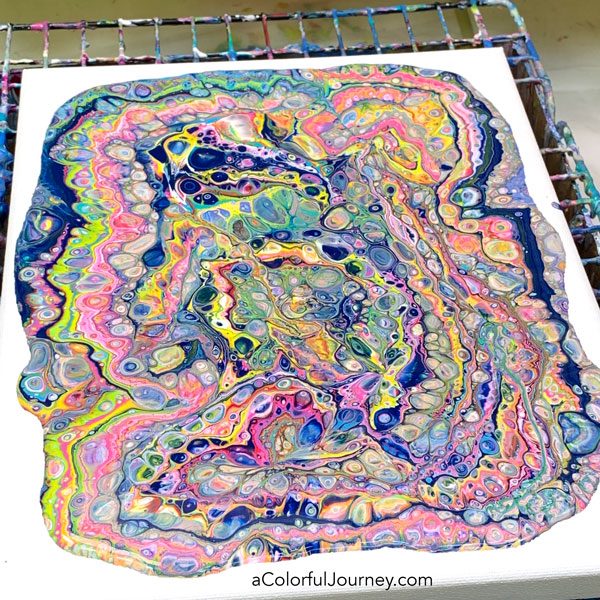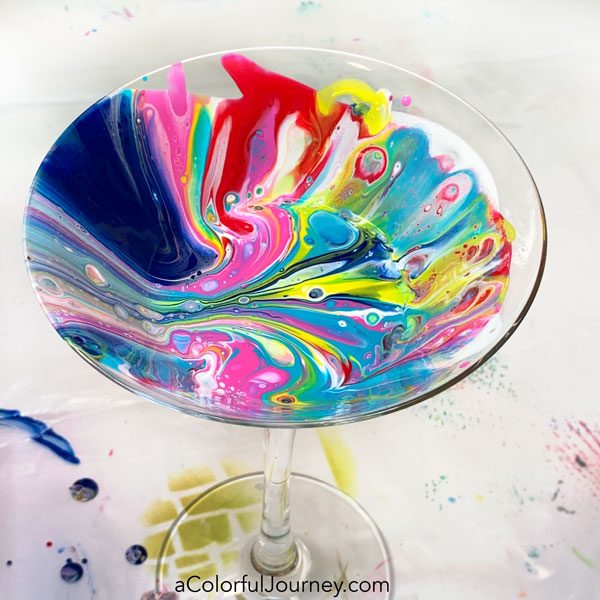
What kind of paint pouring would James Bond do? A dirty pour with a martini glass of course! It’s not shaken or stirred, it’s layered!
What’s in the martini glass? Acrylic paint and Fleotrol from the hardware store. If you’re new to paint pouring and wonder how much pouring medium to use or how to set up your space the easy way, I’ve created a free Paint Pouring Guide to help you.
There is freedom in paint pouring so you can add as much or as little paint as you want. I could have stopped here but I didn’t. Why? There were 3 factors that played a role in my decision to add more paint.

- I don’t like white space.
- There was still paint left in the martini glass
- I wanted the cells to be larger, more stretched. Why? Because the last few canvases I’ve made had really tight cells with fine details and I’m just in the mood for something bigger.

Once I’ve added the paint to the edges, some of it will drip off. That’s why there’s a box under it, to catch those and make paint pouring mess free.
It’s not a fancy box, it’s just a recycled one. And that rack it’s on isn’t a “meant for pouring” thing. It’s a cooling rack from the kitchen section of the store.

Let it drip into the box for about 15-30 minutes. It’s important to move it because when it’s dry, it can stick, dare I say fuse, with the wire rack.
Your drying rack doesn’t need to be fancy, just functional. You can see how to make them from plastic cups and cardboard in the free Paint Pouring Guide.

What if you don’t have a spare martini glass around and you want to try this? You can use any cup to do a dirty pour. Just a reminder, that once a glass is used with paint, it’s no longer food safe.
Want more paint pouring? Then check out my other posts here.



Very pretty, could be very messy in my hands
Awesome! You have just inspired me to start painting my glassware again and of course a new hobby of drip painting on canvas. Thanks for sharing.
Colleen M